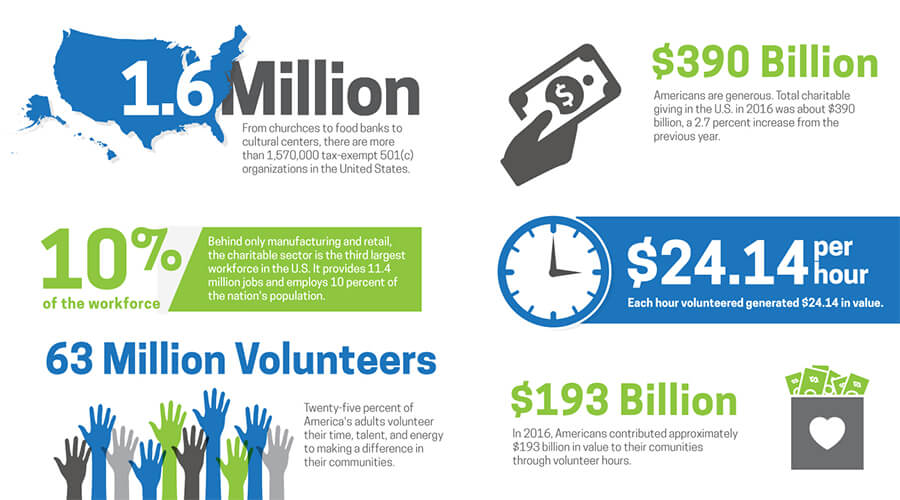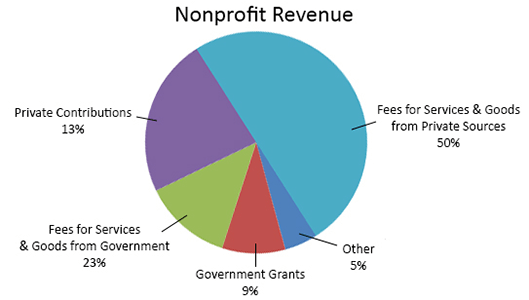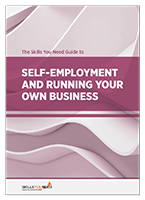10 Step Guide to Starting a Non-Profit Organization
See also: Ethical LeadershipAs with anything else that is worthwhile, starting a non-profit organization requires a solid plan, commitment, patience, and lots of hard work.
Although the process can be complex and intimidating, you can greatly increase your chances of success by following a methodical step-by-step plan.
To help you out, here is a simple 10-step checklist to help you start a non-profit organization.
What is a Non-profit Organization?
A non-profit organization (sometimes called a non-business entity) is an organization that is traditionally dedicated to advocating a shared viewpoint or furthering a specific social cause.
It's an organization that typically performs a type of community or public benefit and isn't driven by the goal of making a profit.
In the United States of America, there are over 1.3 million charitable non-profits that help to feed, heal, shelter, inspire, and educate people from all across the world.
Charitable non-profits provide a way for different people to work together toward the common good.
They transform shared hopes and beliefs into action and bring noble causes to life.

Types of Non-profits
There are different categories of non-profits that are recognized by the IRS in the US, and these include:
- Charitable or religious organizations
- Social welfare organizations
- Labor and agricultural organizations
- Business leagues
- Veterans’ organizations
Each of these categories has its own unique set of requirements and tax benefits.
Although in the US the majority of non-profit organizations fall under the IRS Code 501(c)(3) as charitable organizations, it's important to review the categories to ensure that you choose the right one for your non-profit.
10 Steps to Starting Your Non-Profit Organization
While it can be difficult to decide what should be a priority when you begin your non-profit, there is a simple process you should follow.
To help you get started, here are the 10 steps that you need to follow:
1. Research
Your first step is to do the actual research. There are certain key things that must be researched, including the following:
Identify an Existing Need: This will help to ensure that your non-profit will be an effective way of addressing the specific issue.
-
Create a Solid Financing Plan: More than passion, your non-profit needs a plan to finance the organization during the startup phase, and in the future. The price for a service of a non-profit organization is not always clear. There are many factors that should be considered when setting up your prices, including cost and value proposition to customers.
Research Startup Costs: Your research must reveal what the cost is to start your non-profit organization.
Outline Ways to Demonstrate Impact: How is your newly-formed non-profit going to demonstrate its impact to funders so they continue to support you?
Make a Plan to Get Funding: Find the different places you can attract funding for your startup in order to ensure financial sustainability and organic success, such as crowdfunding platforms. Make sure to make compelling crowdfunding video campaigns to help deliver your messages across.
As you can see from the graph below, there are a lot of ways to get revenue for your non-profit.

(Source: Nonprofit Sector in Brief 2014 National Center for Charitable Statistics, the Urban Institute)
2. Create Your Business Plan
As the founder of a non-profit, it’s important to have a clear plan and purpose for your organization to attract support and capital. So, your next step is to clarify your purpose and create your business plan. In other words:
What do you want to do; and
How are you going to do it?
Ask yourself these questions and come up with clear reasons why your community should support, donate, or volunteer to help your cause.
Here are some of the things to include in your non-profit's business plan:
- Executive Summary
- Mission, Vision, and Values
- Programs, Services, and Impact
- Marketing Plan
- Operational Plan
- Financial Plan
Remember to keep it concise and to the point. Your business plan should be succinct and direct.
3. Decide on a Name and Logo
When deciding on a name for your non-profit organization, it's important to pick a name that fits your brand image and goals.
Your name should identify with the work your non-profit does. It should also be easy to remember.
Once you have settled on a potential name, check its availability in the state you incorporate. Different states have different laws that apply to the name you choose for your non-profit so make sure you pay attention to this part of the process.
You will likely also have a professional website to associate with your organization. You have to make sure that your chosen name can be used as a domain name so visitors will never get confused or fail to find your organization online. You’ll have to check domain name availability to ensure there aren’t already existing websites using the name you’ve chosen.
Additionally, once you’ve decided on a name, you’ll also need to come up with a short logo that’s easily recognizable and attractive to look at. What you really need is to capture the eye and make people want to view your content.
With a powerful name and logo, you can easily pull me into your brand and begin building awareness about what you do and why you do it. Just remember that you’ll need to copyright your name and logo to make sure that someone else doesn’t come around and try to steal it!
4. Write and File the Articles of Incorporation
Articles of Incorporation, sometimes referred to as a certificate of incorporation, refers to a legal document that establishes the existence of your non-profit and provides the country or state with your organization's basic information.
Although you can find free templates for articles of incorporation online, it is recommended that you get an attorney to prepare this document for you to ensure that your document is well structured and has all the necessary information.
5. Draft Bylaws
Bylaws are rules established by the organization in order to regulate itself. They are provided for or allowed by a higher authority, such as a legislature or other government body.
In the US, it's not necessary to submit your bylaws to your state. However, they must be available as an internal document so they can be considered "incorporated".
The directors of your board must agree on these bylaws, and they must all sign.
6. Create Your Team

Your next step is to create your team. An official meeting should be held to delegate important roles to various team members, including:
- The president
- Directors
- Secretary
- Treasurer
- … and so on.
As with all other corporations, each meeting you hold in your non-profit needs to follow standard corporate formalities. For instance, meeting minutes should be recorded and added to your corporate book.
Remember that you will also have to plan your employee’s schedules, so they’ll never have to work overtime or extra hours (unless an unexpected problem pops up, for which you’ll have to adequately compensate). Whether your team will work in an office or remotely, they need adequate rest so they’ll perform at their best. Working for a non-profit organization can be stressful at times, so enough relaxation is essential to keep your employees happy and healthy.
7. Obtain an Employer Identification Number (EIN)
In the US, EINs are ID numbers used by the IRS to easily identify companies on tax-related filings. You must obtain an employer identification number whether you plan to apply for federal tax exemptions or file regular taxes.
You can complete your EIN application on the IRS website, and the application doesn't require filing fees.
8. Apply for Federal Tax-Exempt Status
Tax exemption comes in many different forms. It can be the complete relief from paying taxes or reduced taxes. It can also be tax-only on a portion of items.
As a non-profit in the US, you can apply for federal tax exemption under section 501(c) of the IRS Code. The tax-exempt status that is most commonly applied for is the 501(c)(3). This includes all educational, religious, and charitable organizations.
There is a filing fee and applications must be accompanied by supporting documents, including the organization’s bylaws, articles, and financial reports.
9. Learn Your State Requirements
The initial requirements for starting a non-profit vary widely across different countries and across different US states. For instance, Georgia, Nebraska, Arizona, and Pennsylvania states require that all new corporations announce their incorporation with a notice in the local paper.
Depending on the state you're operating in, you may also be required to file an initial report instead of an annual or biennial report.
Some US states even require local business licenses, as well as other permits. That's why it’s important that you familiarize yourself with the initial requirements in your state.
10. Manage Annual Compliance Requirements
One of the most important things you must do when starting a non-profit is to keep your organization in good standing by managing all its annual compliance requirements. You can use a CRM to manage everything under one roof.
Some basic requirements include
- Annual tax filings
- Charity registration renewals
- Expense policy compliance to prevent fraud
- Annual or biennial reports with updates of changes in contact information or management
...and so on.
Next Steps
Grow Your Influence
After you get your entire organization set up, now comes the fun part of finding ways to create relationships with donors and building an engaged following.
There are many different ways to do this, but I’ve generally found that creating a website for your non-profit is the first step.
The next obvious one is starting a blog, focusing on content marketing and following high quality link building strategies are one of the best ways to get in front of the right audience.
Besides blogging, starting a YouTube channel can be a great place to build an audience for non-profits. Aside from the fact that it’s the second largest search engine, you can make money on YouTube for your non-profit to support your efforts while you grow.
While the channel won’t be lucrative at first, as you grow, it can be another income stream to contribute to your organization by finding people who may donate or just through ad revenue.
To be successful on YouTube you’ll need to create a content strategy, an individual willing to speak on camera, and some type of video editing software. Personally, I’m a fan of Movavi editing software, but there are many options out there.
Also, Instagram has incredible functionality for non-profits. Whether you’re using reels, pictures, or built-in ecommerce functionality, there are all sorts of ways to make Instagram work for you and your small business.
Lastly, and something I use in my own organization, it’s a great idea to connect with other professionals specifically on LinkedIn.
Why LinkedIn? As a professional social network, it’s likely that you’ll be able to approach people who are on the platform that are more willing to accept your attempts to connect.
In going through this process myself, I’ve found that tools to automate your LinkedIn outreach can make this process much more feasible, especially if you’re short-staffed and need to complete mass outreach.
Offer Value with Digital Content
Once you have an audience that’s engaged, you can begin to offer value to them to help them better understand your cause.
While this could be a simple ebook or PDF, I’ve found a lot of success in creating free online courses that deliver a ton of value to the students and give them insights and knowledge that they wouldn’t otherwise have.
When starting on this path, it took me quite a bit of time to find the platform for online courses that I preferred, but once I was able to decide on a favorite and take action, things went pretty smoothly from there.
At this point, I have somewhere between 10-15 students sign up for the free course each day and this leads to them building a genuine relationship with me, which is crucial in any organization, even non-profits.
In addition to online courses, I find that hosting webinars is another great way to add value to my brand. One great route to go is to use YouTube to host the webinars and then embed the videos in an email newsletter. It helps to channel your users to your YouTube channel where they can learn more about you and your non-profit through, hopefully, a series of webinars.
Oftentimes your users are short on time, and you want to keep your non-profit brand top of mind. It’s important to think outside the box and find unique ways to engage them. For example, you can create an online jigsaw puzzle or a custom-themed Solitaire game as a fun escape for your colleagues while creating a positive brand experience.
Further Reading from Skills You Need
The Skills You Need Guide to Self-Employment and
Running Your Own Business
If you are thinking about running your own business, or already do so, but feel that you need some guidance, then this eBook is for you. It takes you through self-employment in easy steps, helping you to ensure that your business has more chance of success.
The Skills You Need Guide to Self-Employment and Running Your Own Business is the guide no new or aspiring entrepreneur can afford to be without!
Based on our popular self-employment and entrepreneurship content.
Summary
And there you have it, 10 steps to starting a non-profit organization.
Although starting a non-profit is not an easy ordeal, you can help ensure your success from the start by following each of the steps in this simple checklist.

About the Author
Ron Stefanski is an online entrepreneur and marketing professor who has a passion for helping people create and market their own online business. You can learn more from him by visiting OneHourProfessor.com
Continue to:
Running a Sustainable Business
Entrepreneurial Skills
See also:
Leadership Styles
Professional Ethics


